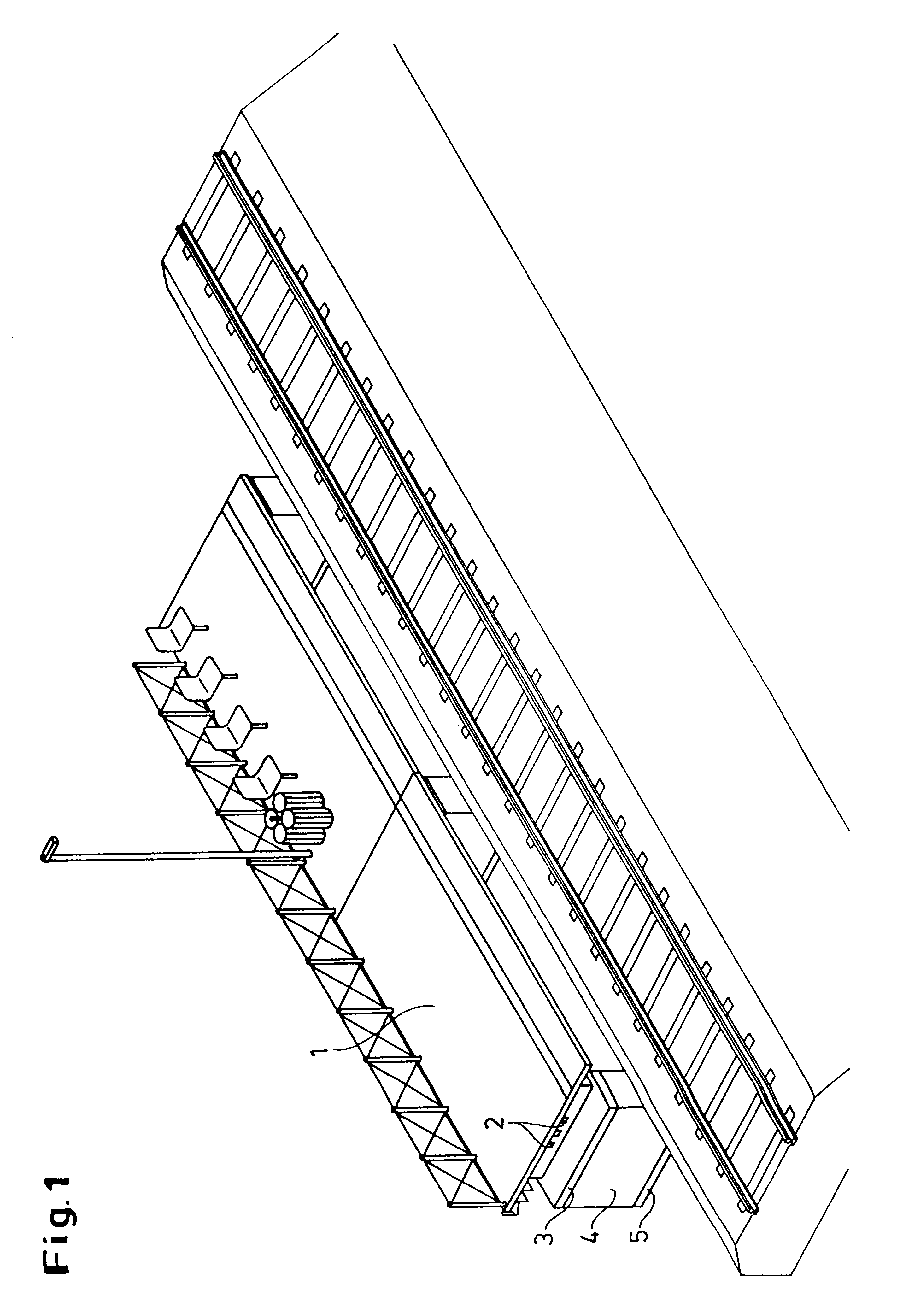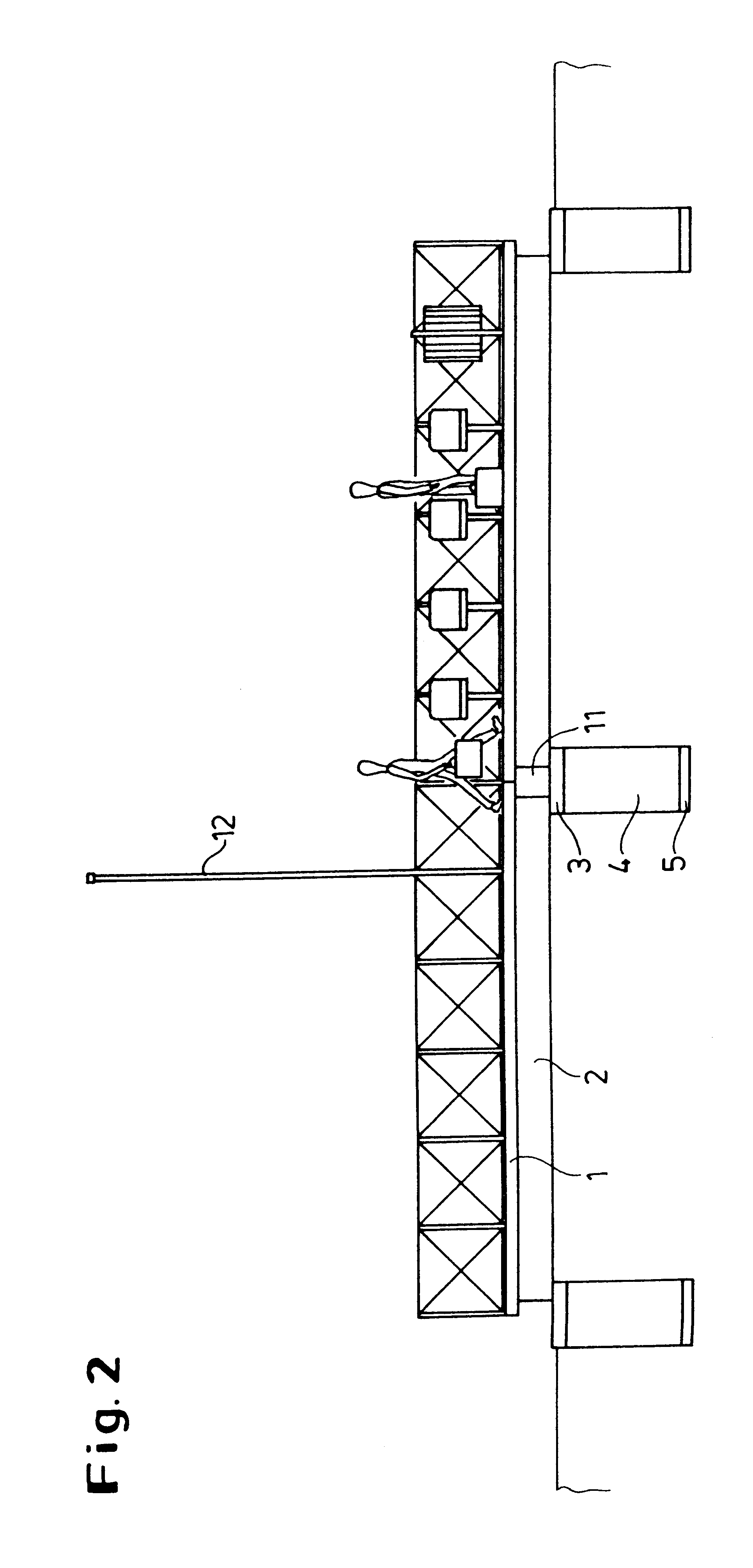However, static structures of this kind no longer meet the requirements of modern
rail traffic.
On the one hand, they are inflexible with regard to requirements emanating from new technical developments.
On the other hand, they do not provide the possibility of carrying out unavoidable corrections relating to dimensions and spacings on the structure at a later time in a straightforward and cost-effective manner.
Under the modern requirements for comfort and safety, it is no longer acceptable to tolerate such deviations without correction.
Moreover, the conventional station platforms are to be criticized from a current standpoint for the complex, time-consuming and cost-intensive construction which impedes operation.
A station platform
system of this type may reduce the construction time of a station platform compared to the fixed construction, but the handling of the
solid longitudinal beams and the many platform slabs is still relatively complex.
Moreover, the platform slabs are not protected against bending or "sagging" toward the unsupported center between the two longitudinal beams.
A particular
disadvantage should furthermore be mentioned, that the station platform is not suitable for later reconstruction without difficulty due to the permanently applied connection of the construction elements and, in particular, does not permit any dimensional
adaptation of the
system at all.
This
system has similar disadvantages to those described above.
In particular, no provision is made for dimensional
adaptation and height-adjustability, and the fixed connection of the components to one another results in a structure which cannot easily be changed at a later date.
However, this production on site also has several disadvantages.
The width of the station platform is therefore limited for purely structural reasons because of the high loads exerted by the concrete covering cast in situ on the permanent formwork.
Additionally, influences of
weathering and
frost may impede the construction site.
This slab can only be removed by
cutting the concrete.
The destruction of the reinforcement therefore makes its
reusability extremely limited.
The height-adjustability of the traffic island or the platform system disclosed in the abovementioned publication and in DE 42 05 192 A1 can, however, result in problems in practice, since the desired spacing of the platform edge from the axis of the track may vary between customary platform heights (e.g. 38 cm above the upper edge of the rails (SOK)) and greater platform heights (e.g. 55 cm, 76 cm and 96 cm above the SOK).
In these cases, the height-adjustment may result in an undesirably and unacceptably
large distance of the platform from the axis of the track or from the entrance to the
carriage.
With this design, a platform is obtained, which avoids the disadvantages of the prior art that, after a change in height, the horizontal distances from the axis of the track are unfavorable or unacceptable from the viewpoint of convenience and safety.
Particularly from the aspect of current demands for convenience and safety, such differences can no longer be tolerated without correction.
In this case, the destruction of the reinforcement greatly restricts the
reusability.
In the case of concrete cast in situ, this would mean an additional operation or even a greater maintenance outlay due to the poorer quality of the connection of the top covering to the platform slab.
In this case, however, the retention against unintentional
lateral displacement must be such that it does not prevent lateral variability which is required for the reconstruction of the platform.
Generally, however, the
surface pressure resulting from the weight of the system platform and its fitting elements is so small that the abovementioned foundation is sufficient.
 Login to View More
Login to View More  Login to View More
Login to View More 


